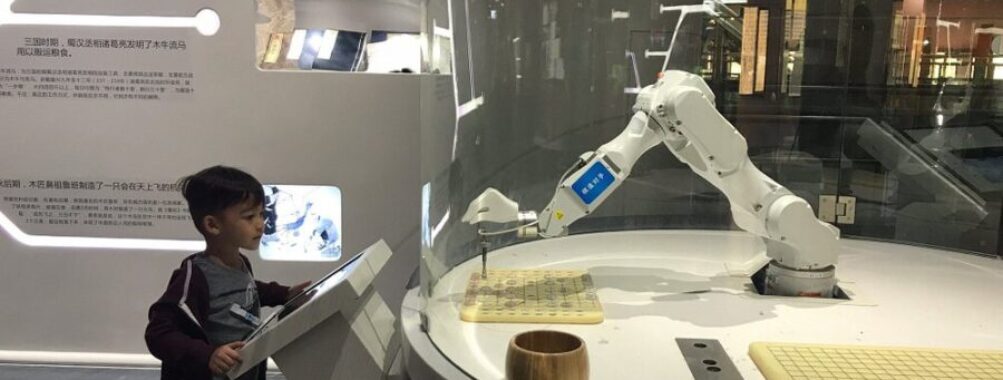
Tianjin Science and Technology Museum
Table of Contents
- History and Significance
- Main Attractions and Activities
- Can’t-Miss Exhibits
- Hands-On Experiences
- Special Zones
- Visitor Experience
- Tips for Visitors
- Accessibility and Facilities
- Unique Features
- Overall Impressions
- Pros and Cons
- Location
- Places to Stay Near Tianjin Science and Technology Museum
- Find and Book a Tour
- Explore More Travel Guides
History and Significance

When the Tianjin Science and Technology Museum opened its sleek glass doors in 2003, it wasn’t just adding another museum to China’s cultural landscape – it was making a statement. This 57,000-square-meter marvel in Binhai New Area represents China’s rocket-fueled ascent as a global tech leader, wrapped in an architectural package that looks like it landed from 2050.
What makes this place fascinating is how it bridges China’s past and future. One moment you’re examining replicas of ancient Chinese inventions like the seismoscope (created 2000 years before the West figured it out), the next you’re piloting a simulator for the Tianzhou cargo spacecraft. It’s a physical manifestation of China’s ambition to reclaim its historical position as an innovation superpower.
Main Attractions and Activities
Can’t-Miss Exhibits
-
Space Exploration Hall: Home to full-scale models of China’s Long March rockets and a lunar rover you can “drive”
-
Robot World: Where humanoid bots play chess, paint calligraphy, and occasionally sass visitors in Mandarin
-
Earth Exploration: Features a terrifyingly realistic earthquake simulator that’ll make you appreciate solid ground
Hands-On Experiences
-
Virtual Reality Lab: Strap in for a dizzying tour of China’s space station
-
High-Tech Workshop: Where kids can build and program their own robots
-
Science Theater: Daily shows featuring everything from liquid nitrogen demos to laser light symphonies
Special Zones
-
Ancient Chinese Technology: Prove to your kids that China invented everything from paper to the first compass
-
Future City: A child-scale metropolis demonstrating smart technology in action
-
Ecological Civilization: Highlights China’s green tech innovations (with impressive solar panel displays)
Visitor Experience
Walking in feels like stepping onto a sci-fi movie set – all gleaming white surfaces, interactive touchscreens, and the constant hum of excited chatter. The air smells faintly of ozone and optimism. You’ll notice three distinct crowds:
-
School groups in matching uniforms, shepherded by exhausted but enthusiastic teachers
-
Tech bros geeking out over the aerospace exhibits
-
Families with kids bouncing between exhibits
The staff – mostly fresh-faced STEM graduates – have that particular Chinese mix of professionalism and patience, calmly explaining quantum physics concepts to hyperactive eight-year-olds for the hundredth time that day.
Tips for Visitors
-
Avoid Weekends – Unless you enjoy navigating through seas of school trip groups
-
Download Their App – Includes an English audio guide and real-time exhibit wait times
-
Wear Comfortable Shoes – You’ll easily clock 5+ miles covering all floors
-
Bring Your Passport – Foreign visitors need it for ticket purchase
-
Time the Planetarium – Shows fill up fast, grab tickets right after entering
Accessibility and Facilities
For a massive Chinese public institution, accessibility is surprisingly good:
-
Wheelchair ramps and elevators throughout
-
Tactile models for visually impaired visitors
-
Quiet rooms are available for neurodiverse guests
The food court serves decent Chinese cafeteria fare (try the Tianjin-style dumplings), while the gift shop stocks everything from robot kits to astronaut ice cream. Clean Western-style toilets are plentiful – a rarity in many Chinese museums.
Unique Features
What sets this museum apart:
-
The Scale Models – Where else can you walk under a full-size Long March rocket replica?
-
Chinese Perspective – The history of science is told unapologetically from a Chinese viewpoint
-
Working Labs – Actual scientists sometimes conduct experiments in glass-walled labs
-
AI Tour Guides – Humanoid robots that can answer questions in multiple languages
-
The Architecture – The building itself is a lesson in sustainable design with its solar panel skin
Overall Impressions
The Tianjin Science and Technology Museum manages to be both inspiring and slightly overwhelming, like drinking from a firehose of scientific wonder. It perfectly captures China’s current technological golden age, where ancient innovation meets cutting-edge research.
You’ll leave equal parts impressed by human ingenuity and mildly concerned about the chess-playing robots’ increasing competence. The museum does an excellent job of making complex concepts accessible without dumbing them down – no mean feat when explaining quantum computing to elementary schoolers.
Pros and Cons
Pros
-
World-class interactive exhibits that work (unlike many Western science museums)
-
Excellent English signage throughout
-
Affordable admission (about $8 for adults)
-
Constantly updated with new tech displays
Cons
-
It can get extremely crowded
-
Some exhibits’ English translations get… creative
-
Limited food options for picky eaters
-
No re-entry once you leave
If you have even a passing interest in science, technology, or China’s rise as an innovation powerhouse, this museum is worth a day trip from Beijing (it’s just a 30-minute high-speed train ride away). It’s like the Smithsonian’s Air and Space Museum – if the Smithsonian had an unlimited budget and wasn’t afraid to let visitors push all the buttons.
Location
Places to Stay Near Tianjin Science and Technology Museum
Find and Book a Tour
Explore More Travel Guides
No reviews found! Be the first to review!